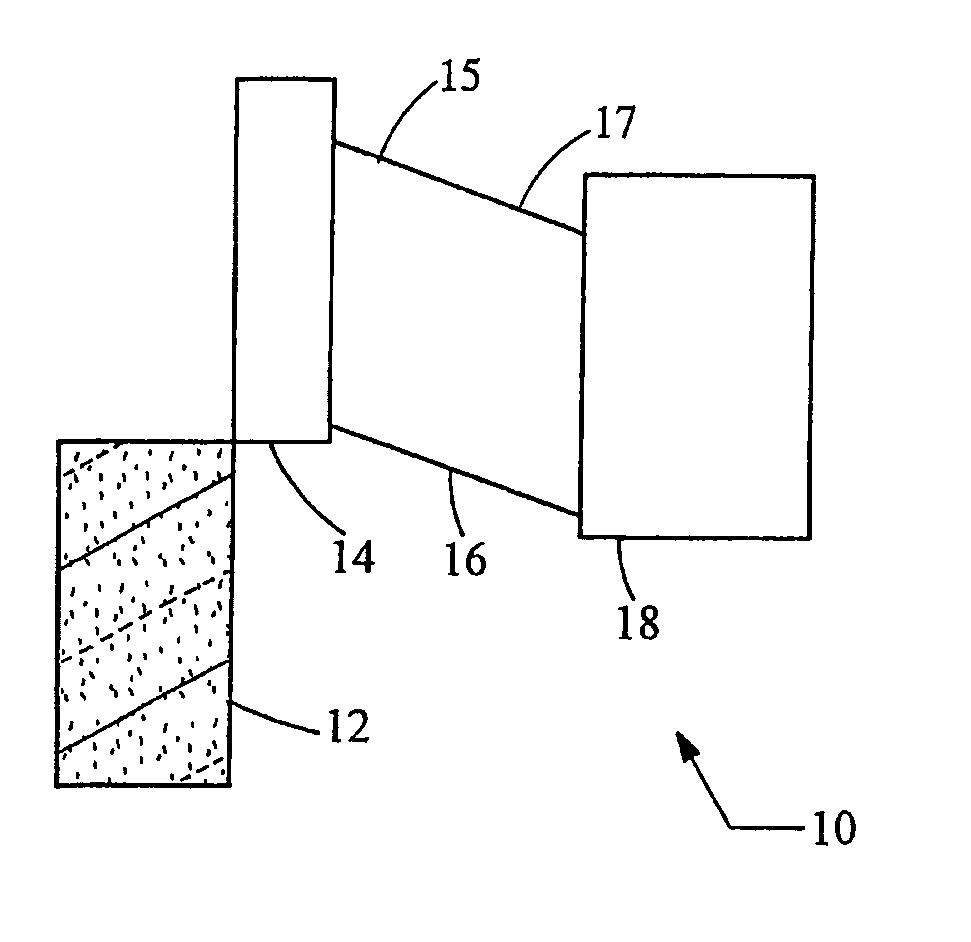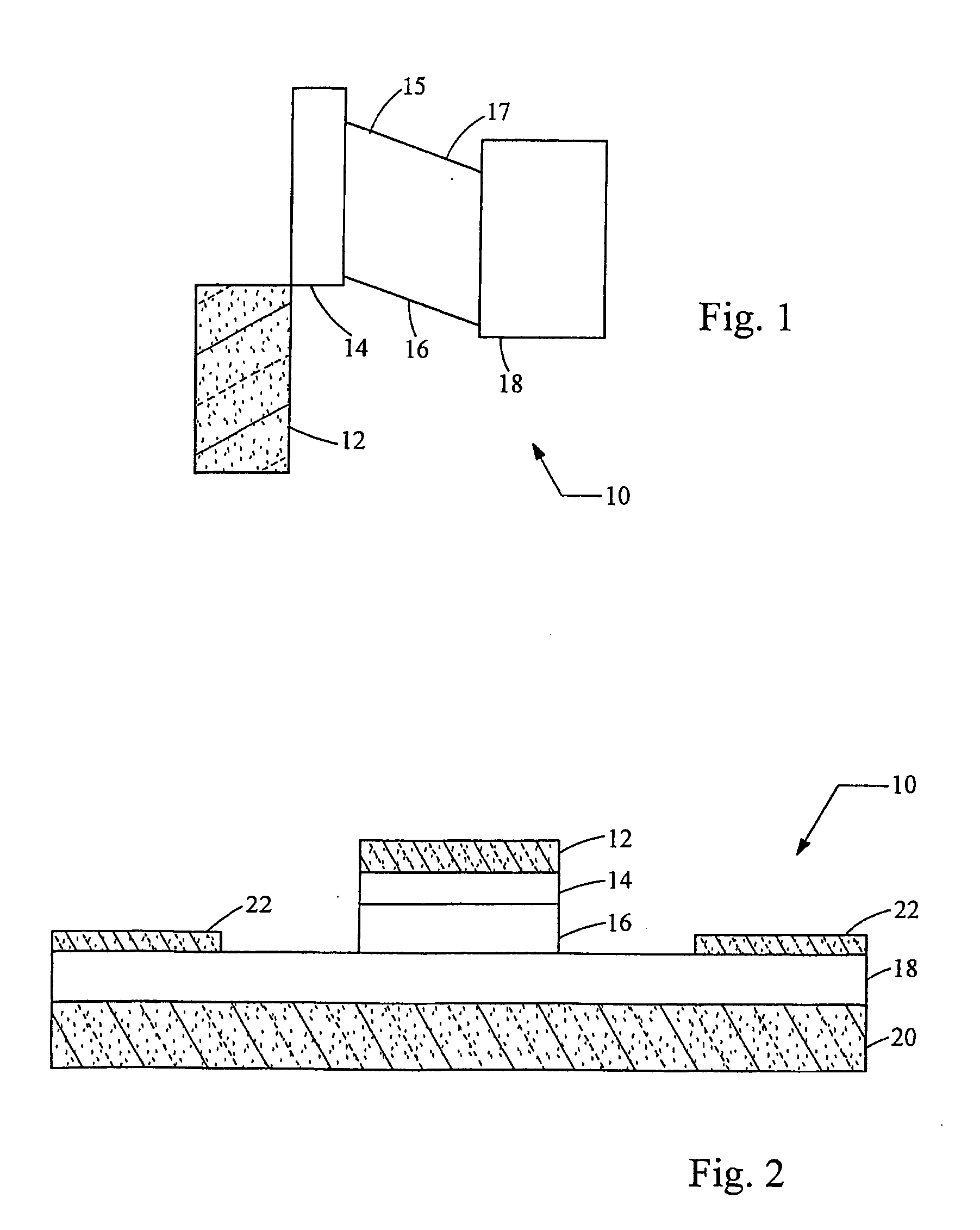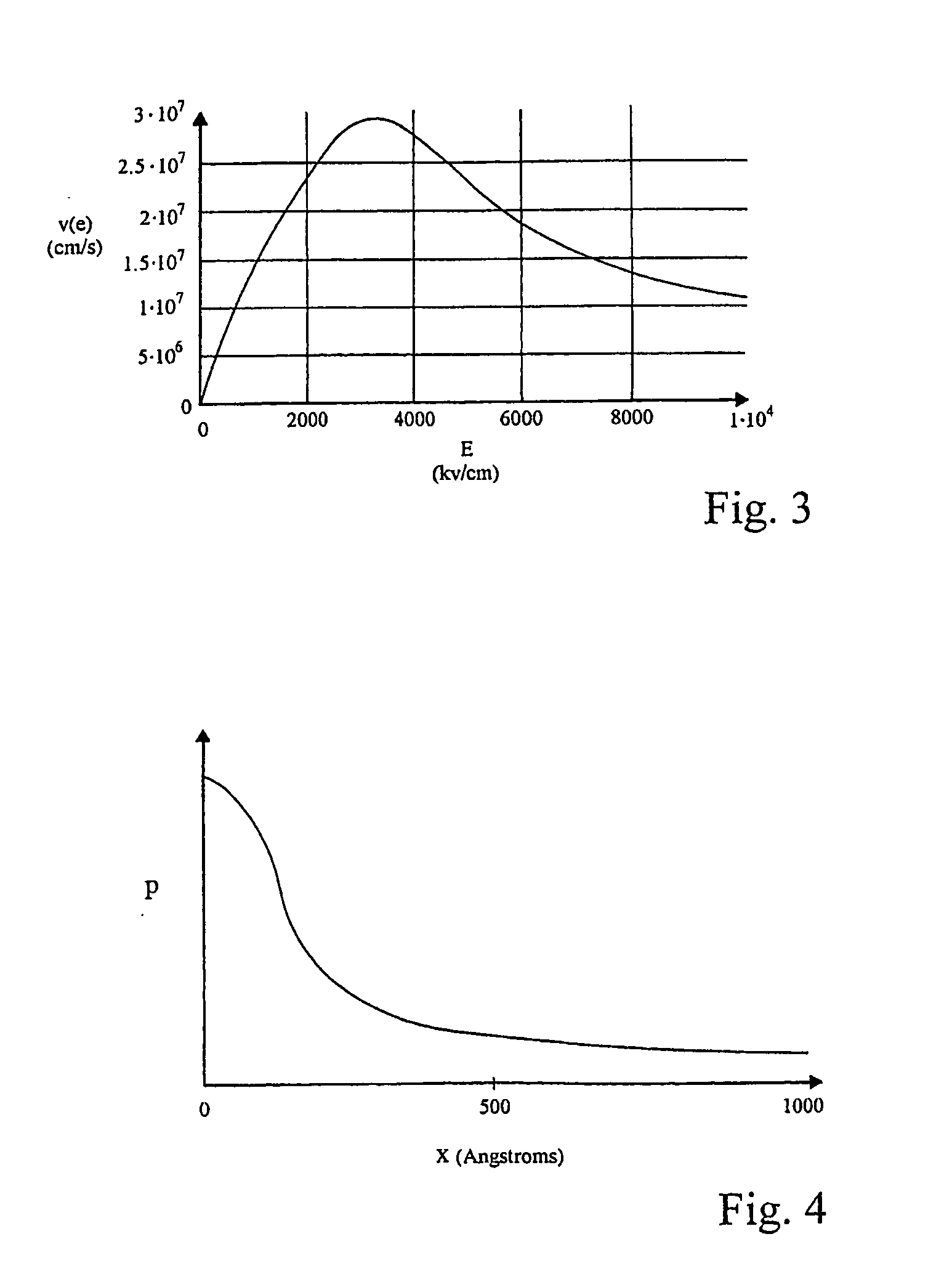Enhanced photodetector
a photodetector and enhanced technology, applied in the field of semiconductor-based photodetectors, can solve the problems of reducing absorption and lower responsivity, increasing the transit time of carriers, and diodes with a very small junction capacitance and corresponding fast response, so as to increase the speed of pin diodes, reduce the resistance, and reduce the resistance
- Summary
- Abstract
- Description
- Claims
- Application Information
AI Technical Summary
Benefits of technology
Problems solved by technology
Method used
Image
Examples
Embodiment Construction
In accordance with a preferred embodiment of the present invention, an epitaxial structure is provided for photoconductive purposes. The photoconductive structure is a modified PIN diode that is optimized for increased performance through an enhanced layer having a graded doping concentration. The particulars of the structure and method of manufacture of the present invention are discussed further herein.
Referring to FIG. 1, an energy band diagram of a PIN photodiode 10 shows the relative energy levels of the semiconductor materials that form the photodiode 10. In particular, the photodiode 10 is comprised of a group of semiconductor materials, including a first p-type semiconductor layer 14, a second p-type semiconductor layer 16, and an n-type semiconductor layer 18. An anode layer 12 is shown adjacent to the first p-type semiconductor layer 14 to collect holes.
The first p-type semiconductor layer 14 is selected from a group comprising tertiary semiconductors, or group III-V ...
PUM
 Login to View More
Login to View More Abstract
Description
Claims
Application Information
 Login to View More
Login to View More - R&D
- Intellectual Property
- Life Sciences
- Materials
- Tech Scout
- Unparalleled Data Quality
- Higher Quality Content
- 60% Fewer Hallucinations
Browse by: Latest US Patents, China's latest patents, Technical Efficacy Thesaurus, Application Domain, Technology Topic, Popular Technical Reports.
© 2025 PatSnap. All rights reserved.Legal|Privacy policy|Modern Slavery Act Transparency Statement|Sitemap|About US| Contact US: help@patsnap.com



